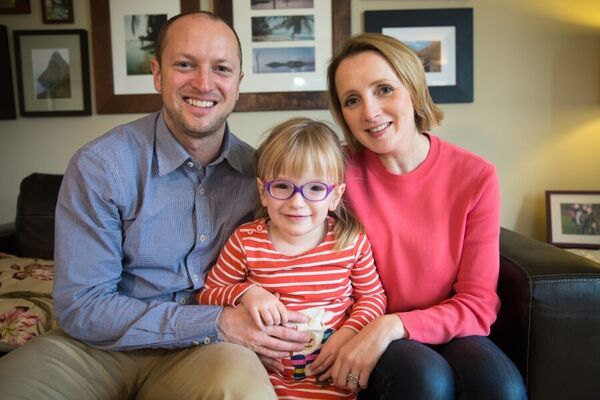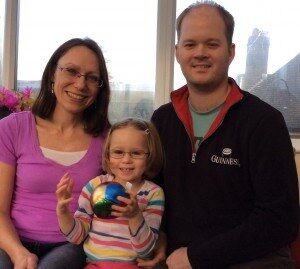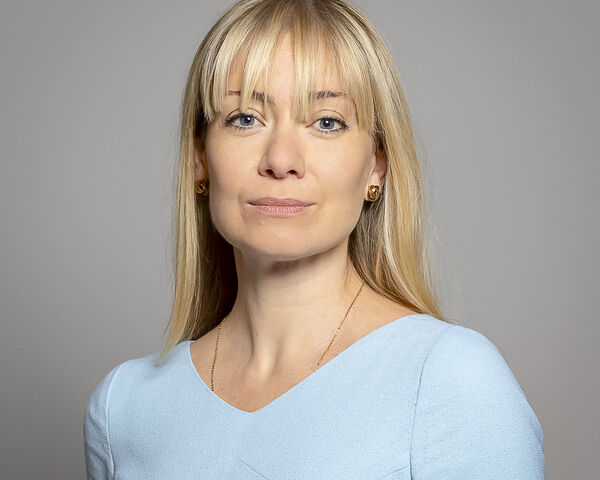First children receive diagnoses through 100,000 Genomes Project
The first children to receive a genetic diagnosis through the 100,000 Genomes Project have been given their results at Great Ormond Street Hospital (GOSH), part of the North Thames NHS Genomic Medicine Centre.
Both Georgia Walburn-Green and Jessica Wright had rare, undiagnosed, genetic conditions when they joined the Project. Whole genome sequencing pinpointed the underlying genetic changes responsible for their conditions.
As well as removing a large amount of uncertainty for the families, the results stand to have a major impact on many areas of their lives including future treatment options, social support and family planning. They also have the potential to help many more children with undiagnosed conditions who may be tested for these genetic mutations early on and be offered a diagnosis to help manage their condition most effectively.

Georgia’s story
Between ages of one and two, Georgia’s family discovered all the problems she had one by one. As well as both physical and mental developmental delay, they found that she had a rare eye condition that affects her sight, her kidneys don’t function properly, and she has verbal dyspraxia meaning they don’t know if she will ever talk. Standard genetic testing brought up nothing and so doctors explained that she had an undiagnosed genetic condition.
Amanda, Georgia’s Mum, said: “I had no idea that it was possible to have an undiagnosed condition. I thought you get told you might have a genetic condition, you have the genetic test, and then you get the answer. Being told that Georgia had an undiagnosed condition was one of the hardest points of our lives as we felt like we were alone.”
When the family heard about 100,000 Genomes Project they were keen to sign up.
Amanda said “As soon as we were on the project I felt a huge sense of relief. I felt that they now had all the information needed to look at the full picture and it just required someone to decipher and understand it. There’s nothing else we could do or give and there would be no other secrets to unlock with Georgia. They had her genome and so the answers had to be there somewhere.”
It was almost exactly a year until they received a phone call from Great Ormond Street Hospital geneticist Maria Bitner-Glindzicz explaining that they had found a mutation in a single gene in Georgia which was likely to be the cause of her problems. This, for the first time, gives Georgia a molecular diagnosis for her condition.
Professor Mark Caulfield, Chief Scientist at Genomics England said:
“It is our aim to bring new diagnoses and, if possible, identify potential therapies for participants in the 100,000 Genomes Project. This is a pioneering project that will transform the application of genomics in our healthcare system.”
NHS Chief Scientific Officer Professor Sue Hill, OBE said:
“This is an excellent example of how whole genome sequencing can finally provide the answers that families have been seeking out for years. These new insight sets them free to make decisions about the treatment options for their child and how they move forward with future plans for their family.
“The 100,000 Genomes Project has put the NHS at the forefront of science, expanding on medical diagnosis and providing a personalised medical treatment plan based on the information that comes from their genome.The more people who come forward to participate in the Project, the greater the body of knowledge there will be to inform diagnoses and patient care in the future.”
Secretary of State for Health, Jeremy Hunt said: “Ground-breaking outcomes like this one for Georgia and her family are incredibly promising, and are the reason that this Government has invested over £200 million in bringing such revolutionary science to the NHS.
“By sequencing DNA on an unprecedented scale, we are also cementing the UK’s position as a world-leader in 21st century medicine”.
Georgia’s family are now hoping that over time they will find out more about her condition and her prognosis. They also hope to connect with the other families that have children with the same gene change.
Amanda said: “It’s going to take time to find out more about this gene and what it controls and affects but I’m sure they’ll find more out. Medicine is not yet at the stage to offer genetic therapy but we have come so far in Georgia’s lifetime already that who knows what the future holds.”

Jessica’s story
Jessica Wright was also recently diagnosed through the 100,000 Genomes Project. She is pictured here with her family - image courtesy of Great Ormond Street Hospital.
Mum, Kate Palmer talked about what the diagnosis means for them: “Now that we have this diagnosis there are things that we can do differently almost straight away. Her condition is one that has a high chance of improvement on a special diet, which means that her medication dose is likely to decrease and her epilepsy may be more easily controlled. Hopefully she might have better balance so she can be more stable and walk more. She’s now four years old still looks like a wobbly toddler trying to move around!
A diagnosis also means that we can link up with other families who are in the same boat and can offer support. The condition is still quite rare but there are definitely other children out there who have it. I’m really looking forward to saying ‘We are one of you, we have this problem too!’
More than anything the outcome of the project has taken the uncertainty out of life for us and the worry of not knowing what was wrong. It has allowed us to feel like we can take control of things and make positive changes for Jessica.
It may also open doors to other research projects that we can to go on. These could be more specific to her condition and we are hopeful that they could one day find a cure.”
GOSH Consultant in Clinical Genetics, Professor Maria Bitner-Glindzicz says: “With undiagnosed genetic conditions it really is a case of the more families we test, the more we can diagnose. In order to confidently say that a particular gene is likely to be the cause of a condition and not just natural variation that we see in everyone’s genes, we have to match up gene mutations and symptoms across several children to find common features. The more children we therefore have to cross check against, the more likely it is that we can find these common features and give a diagnosis.”
Watch Jessica’s story in this video:


